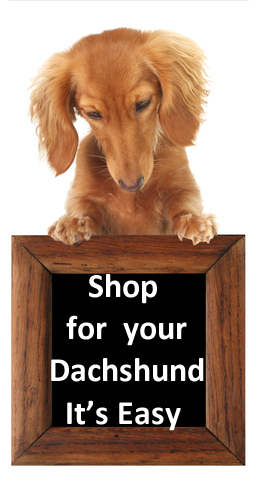One of the common canine back problems is Intervertebral disk disease.
Learn more about Intervertebral disk disease, one of the most common canine back problems effecting dachshund dogs.
|
|
The vertebral column or backbone consists of a series of small bones that protect the spinal cord any damage to the spinal cord will affect the movement of body and limbs, also feeling of touch and pain.
|
These disks have an outer layer that is fibrous which contains the inner region that is soft and jelly like.
The problem occurs when the inner jelly protrudes or herniates through the fibrous layer into the vertebral canal and presses on the spinal cord. This compression may be slight or severe and this will depend on the amount of protrusion into the canal.
Type 1 intervertebral disk disease usually occurs in dogs with short thick legs such as dachshunds, welsh corgie, bassett hound and beagles. Although short legs are normal for these breeds it is basically the result of abnormal development of cartilage.
The disks in these dogs become more like cartilage than fibrous tissue, this increases the risk of rupture into the vertebral canal. This can occur in these dogs at a fairly young age 3-6 years and sometimes younger and can occur at several sites in the back, causing considerable pain.
Type 11 intervertebral disk disease often only partial protrusion not complete rupture and mostly seen in dogs that do not have the short thick legs and are larger breeds. Usually appears in older dogs 6-10 years and develops more slowly and is less severe than Type 1.
Type 111 intervertebral disk disease this is a fairly rare, type of disc rupture and is most damaging and traumatic. The disc material herniates severally and may actually enter the spinal cord, so causing severe damage.
This may result in some areas of the cord dying.The damage may be so severe that the only humane option is euthanasia.
Signs of canine back problems or disk disease - Type 1 usually starts quite quickly and is usually severe depending on the amount of pressure on the spinal cord, there may be pain in the region of the neck, weakness or paralysis in some or all the limbs.
Pain is the main sign of this disease and may be steady or occasional, sudden movement causes excruciating pain.
Type 11 intervertebral disk disease - usually develops much more slowly over several months, with pain, weakness or paralysis in some or all of the limbs.
Treatment
IVDD can result in permanent paralysis and incontinence if not treated.
Medical treatment of this disease consists of anti inflammatory medication and strict rest (in a cage) toileting your dog on a lead.
Surgery is a possibility in serious cases to relieve the pressure on the spinal cord, recovery after surgery ranges from fair to good depending on certain factors.
Other options are hydrotherapy, massage, acupuncture, herbal homeopathic treatments, and to assist if paralysed a dog wheelchair.
It is critical to seek veterinarian help immediately, if you think your dog has a back problem, your vet will discuss with you the treatment options available in your dogs particular case.
Help prevent canine back problems by.
- Selective breeding from parents who show no sign of the disease is one way of preventing this condition.
- Over weight dogs are more prone to this disease, as the weight place unnecessary strain on the spine.
- Discourage your dachshund from jumping into vehicles on to furniture and bounding up the stairs putting extra strain on the spine.
For further information about this disease go to Dachshund Club of America
Other pages of interest
Return from Intervertebral disk disease to home page
The information given on this site,is compiled from our
knowledge and research and is designed to supplement
not replace your vets or other professionals advice.
Copyright 2019 All rights reserved
www.dachshund-owner-guide.com
Solo Build It!





